I’ve been working on a stats-driven piece that I’m hoping to have out soon here at Bounces, but I’ve been distracted and stuck on an unexpected topic I wanted to briefly address first: the image that’s been atop the WTA website for the last 12 hours and counting.1
It looks like this:
At first glance it perhaps looks innocuous: a side-by-side of two players, Iga Swiatek and Alexandra Eala, who are set for a rematch this week in Madrid after Eala’s stunning upset of Swiatek in the Miami Open quarterfinals last month.
But there’s a lot happening here once you look closer, so let’s take a look again, and get into the details:
What’s Wrong With These Pictures?
The images of both women were either made, or significantly edited, by some sort of generative AI, mashing and mangling real photographs that were taken of these two women into something new and unsettling, occupying the uncanny valley.
Swiatek’s Side
Let’s start on the left side of the image, with Swiatek.
The clearest telltale signs that the images on the WTA website were AI-made are in the brand logos, which are of course a big part of the business of professional tennis. Though it would seem basic, logos and text are often the things generative AI images struggle with most.
First, the logo on her hat in the WTA website image looks like a small blue flame—perhaps the logo of a natural gas company, I thought.
But if you look at actual photos of Swiatek from Wednesday in Madrid—taken by the WTA’s official photographer, no less—you can see that it’s actually just a boxed in version of the logo of her apparel sponsor, On.
AI couldn’t make out quite what it was on Swiatek’s hat in source images and guessed, incorrectly, and thus hallucinated some sort of flame (or plum or something—it’s nonexistent and imaginary so it’s up for interpretation).
The hat logo is perhaps subtle; the bit on Swiatek’s racquet is more obviously wonky:
The brand name of Swiatek’s racquet manufacturer is mangled and illegible; her fingers also perhaps appear gnarled into some uncomfortable scrunch. There’s also a strange ridge or bump at the top of the throat of Swiatek’s racquet that would never really be there.
Here’s what it should actually look like:
As you can see, the Tecnifibre brand name is very legible in real life, and of course that’s not by mistake: On and Tecnifibre both pay Swiatek big bucks to use their equipment and display their logos, which she dutifully does. If I’m her sponsors or her agents, I’m pretty furious that AI is anonymizing Swiatek’s sponsors like this, especially on the pretty prime real estate they could have had from many hours on the front of the WTA website.
One last note on Swiatek’s side of the image: the AI also made her teeth look yellower and more crooked than they are in real life, which just seems unfair. Who would ever run an image through AI to add cosmetic imperfections?
Eala Edits
For Eala’s side of the image, I believe I was able to find the original image which the Eala AI creation was based off of, again taken by the WTA’s official photographer during her semifinal match in Miami.
Here’s what the WTA website’s creation and the actual photograph look like side by side; I think even an untrained eye will be able to spot the differences very readily. It’s a fun—and then quickly creepy—spot the differences game.
Perhaps because the AI database has a lot fewer photographs of newcomer Alexandra Eala to train off of than it did for Swiatek, I don’t even think the image the WTA published is especially recognizable as Eala. Generously, it’s as if she was drawn from memory from someone who knew her when she was much younger, perhaps.
Aside from making Eala much more babyfaced, the WTA’s AI image also erases the gold chain around Eala’s neck and removes the navy blue nail polish from her thumbnail.
Again, fingers are often an AI weak spot, and the top of this fist is pretty strange.
Like on Swiatek’s image, some of the most severe mangling in Eala’s image is concentrated around the words and logos.
First, there’s the iconic Nike swoosh—in its tennis-centric NikeCourt configuration—which is melded by AI to something that looks nothing like the Nike swoosh (but a whole lot like Long Island).
And then there are Eala’s sleeve sponsors, two big Filipino brands:
Globe Telecom, which has sponsored Eala since she was just 8 years old, is garbled by the WTA’s AI into “ROLD.F”;
And then BPI (Bank of the Philippine Islands), which is rendered by the AI as something close to “Q:o|”
Here’s what the very legible BPI logo actually looks like, if you’re curious:
I contacted the WTA on Wednesday afternoon seeking clarification and explanation of their use of AI in editorial photographs, but have not yet heard back from them at time of publishing.
I have not spotted any other obvious AI in WTA’s editorial photographs; they do use generative AI in social media sometimes (such as AI-generated fake action figures based on WTA players), which isn’t great, but I think at least when done previously it’s been for more frivolous purposes than a news article atop the WTA homepage.
Update:
About 16 hours or so after the strange AI image went up—and after the publication of this article—the WTA changed the image on its website to just a photo of Swiatek alone.
Why Does This Matter?
Generative AI is an inescapable part of life in 2025, especially on the internet, and I don’t think most people are paying nearly enough attention to how insidious and low-quality so much of it is. So much AI is being used and accepted so quickly without understanding how it works, or how much it’s taking the humanity, texture, and competence out of our culture.
I could say a whole lot more about the existential threats of AI at play here—and how much outsourcing of creativity and basic thinking people are willingly doing in the name of profit or just laziness or cutting corners—but in short: when it comes to choosing between humans or machines, I am on the side of humanity, and I think you should be, too.
It’s part of why I was so appreciative of Danielle Collins sounding a note of sympathy to line judges who lost their jobs in favor of Hawkeye Live, saying that “there’s a lot of jobs being taken away because of electronics.” Athletes, perhaps, have some of the most AI-proof jobs of all…until proven otherwise.
I’m especially sensitive to generative AI creep, I’m sure, because I’ve made my career as a writer who writes all my own words—and also works hard to find rights-free or fair use images for all the stories you read here at Bounces (I commissioned the Bounces and NCR logos from the beautifully full-of-life graphic designer Sinan Sadula).
But the recent trends are clear, and the long-term viability (or maybe even short-term if things continue accelerating) of writing as a career depends on audiences being discerning and educated about what’s real and what’s not, and what they can or can’t trust.
People in tech (or who specialize in cost cutting) seem to see generative AI as an irresistible omnipotent cure-all, and sometimes decision-makers and gate keepers who should know better don’t demonstrate discretion. I was pretty angry last summer when this issue suddenly crashed into tennis writing: Wimbledon started publishing banal AI slop blurbs on its app during last year’s tournament, to showcase some pretty subpar work by their longtime sponsor IBM. Wimbledon, to its credit, was responsive to the complaints about the shoddy product, but that was only one moment; it will take constant vigilance and appreciation of human work to stop the avalanche of AI from sweeping humanity and reality out of culture.
All of that alarmism is to say, of course, sincere thanks for reading and supporting this human’s work here at Bounces. Whatever mistakes I make here are my own, and I’m very appreciative and grateful to have the support of you wonderful fellow humans.
-Ben





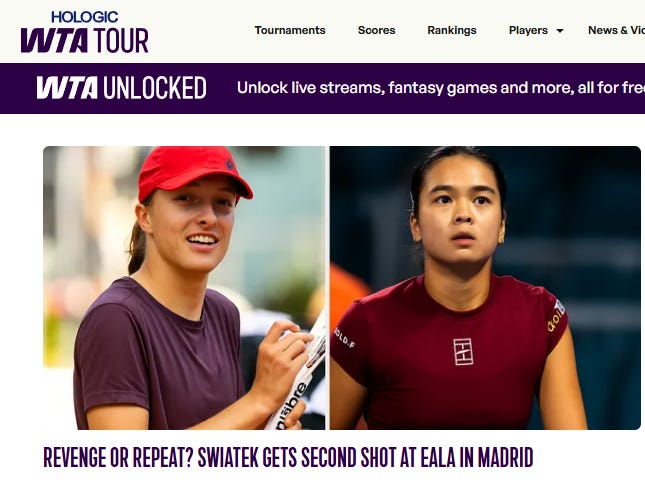
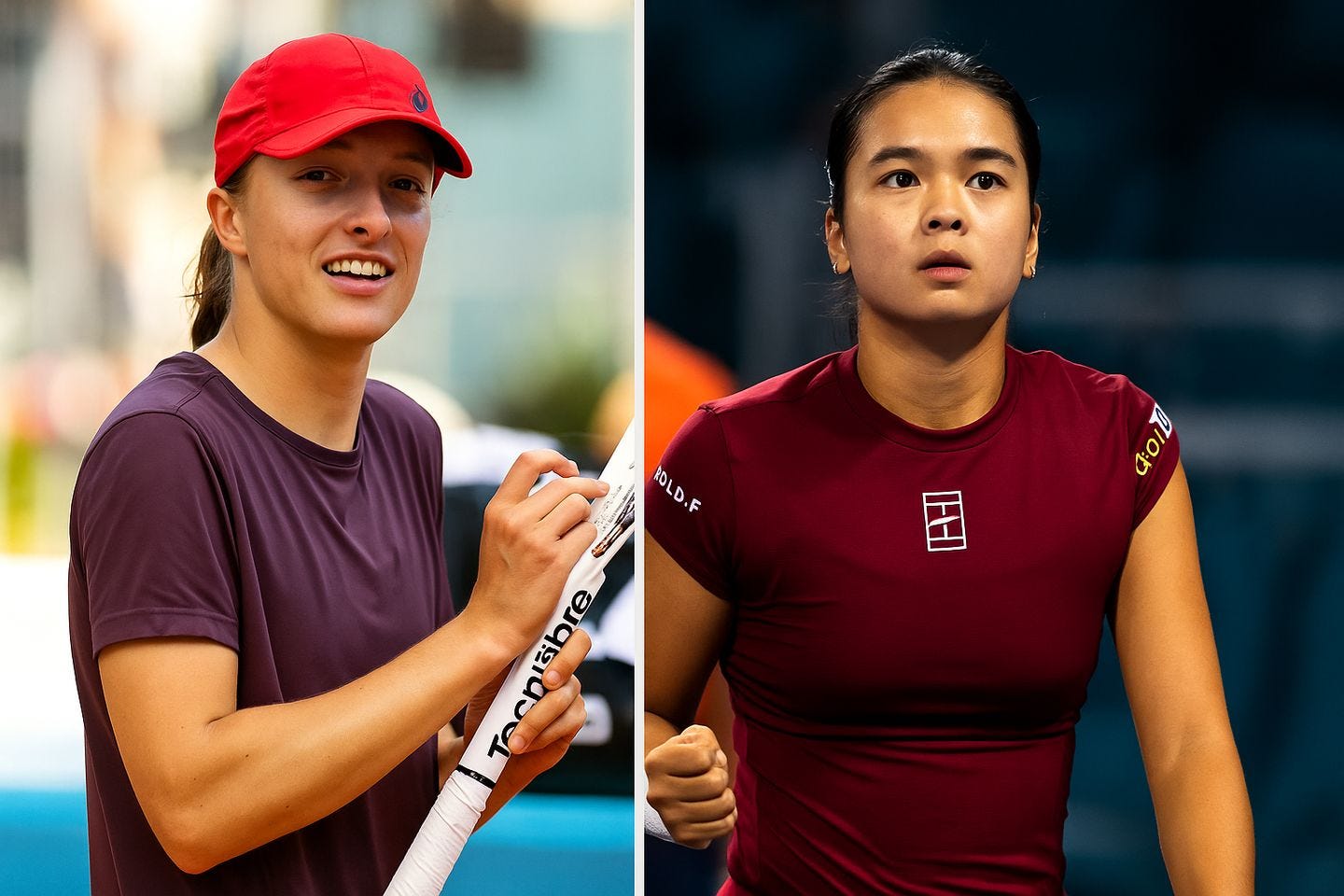
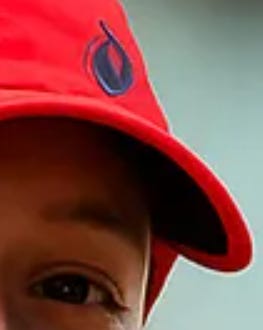
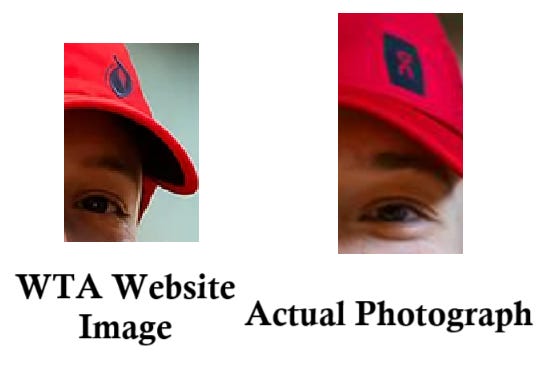
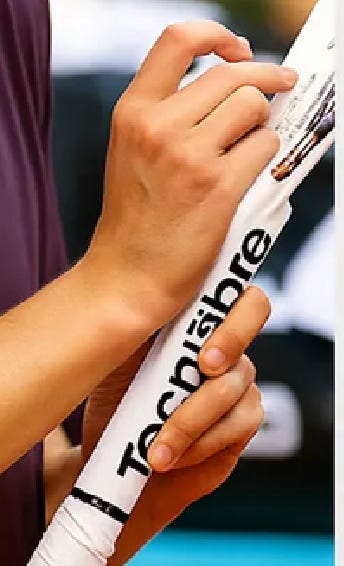
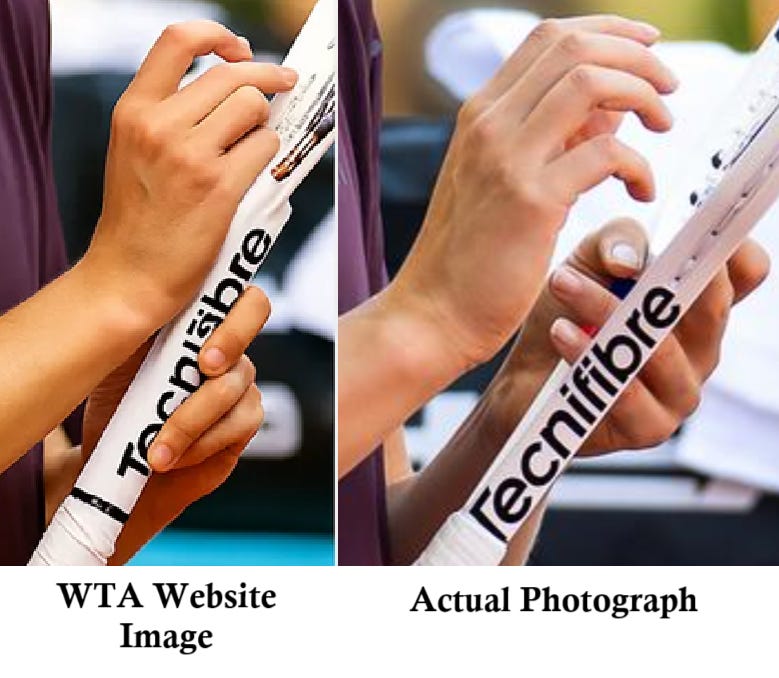


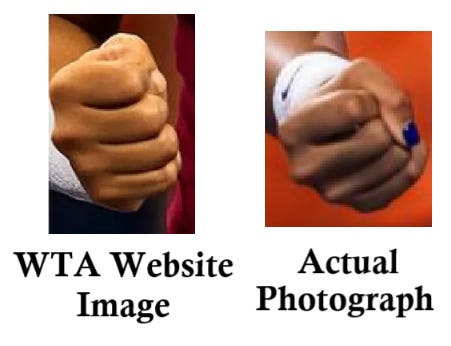


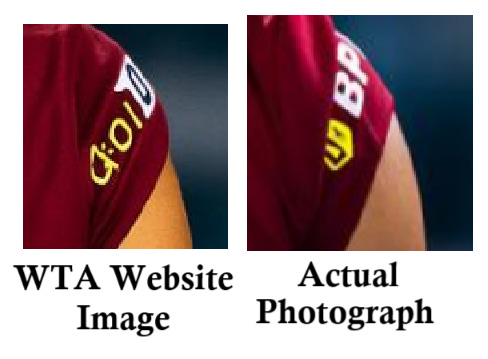

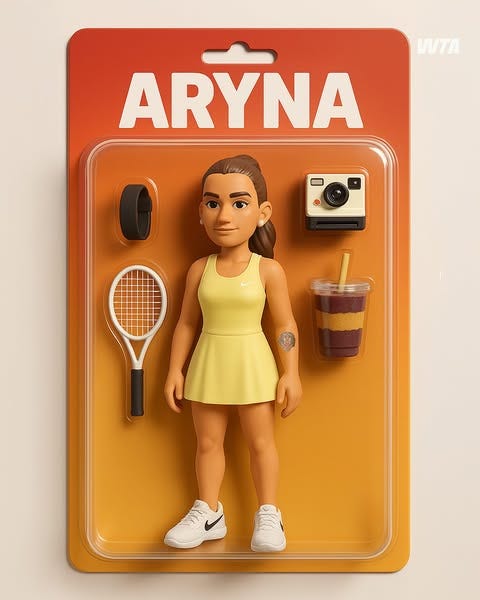
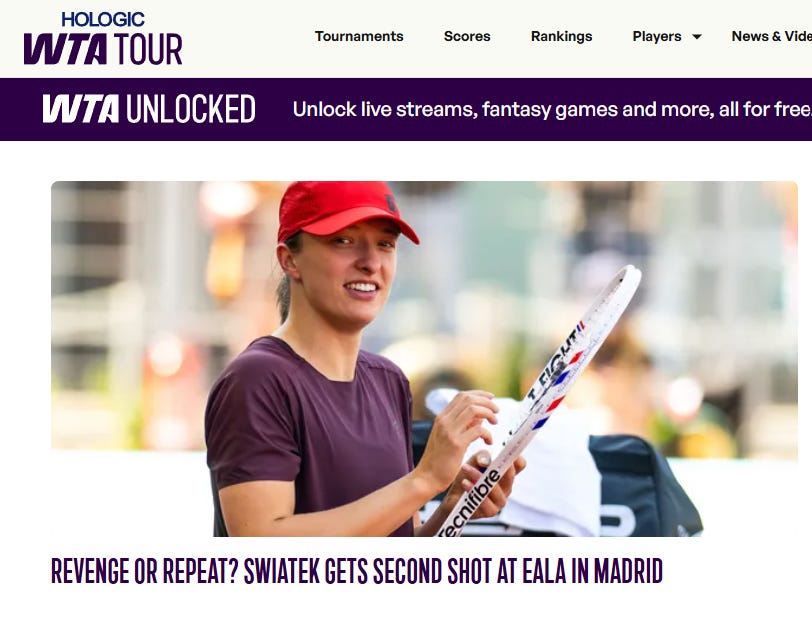


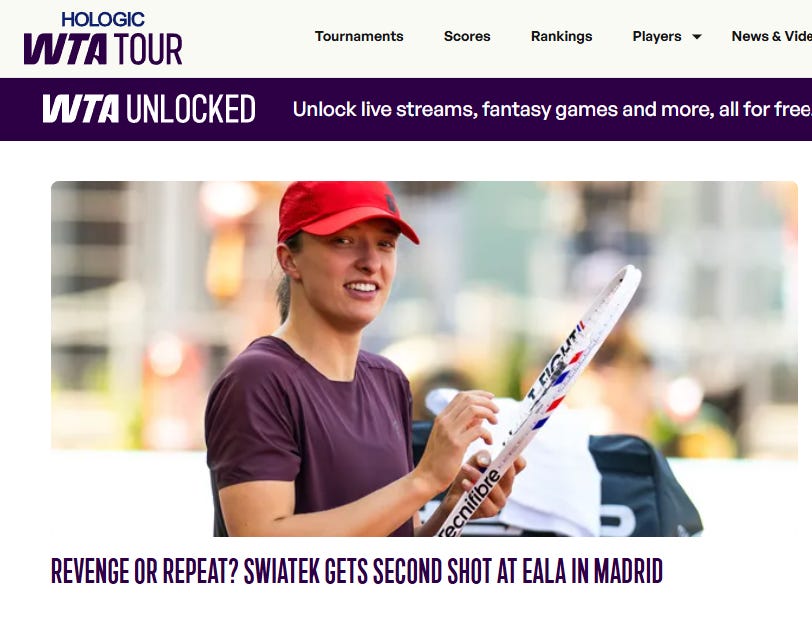
Simple question: why? How is this easier than picking a real recent photograph from a folder (from which I assume the WTA has an abundance to choose). What advantage is the photo editor reaching for by using AI?
This is wild! Well done you for spotting this faux pas. Why on earth though? Surely they have a robust deal with the images providers, so it cannot be a way of avoiding payment for the images by "generating them by themselves". (If so they are too similar to the originals so the copyright is being breached anyways.) Looking forward to hear what the WTA comes back with.